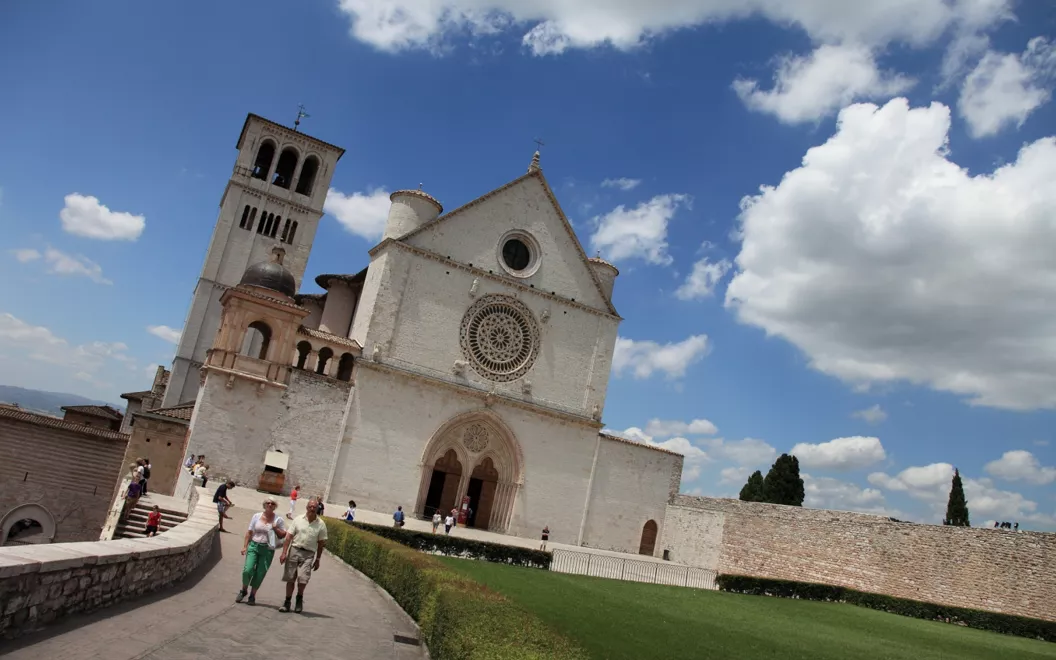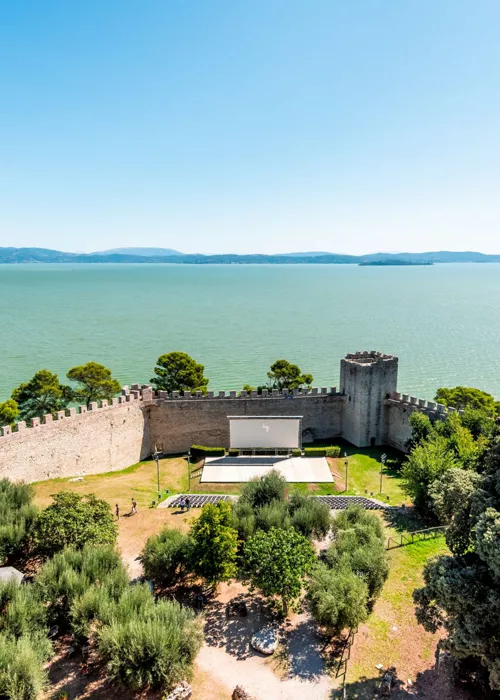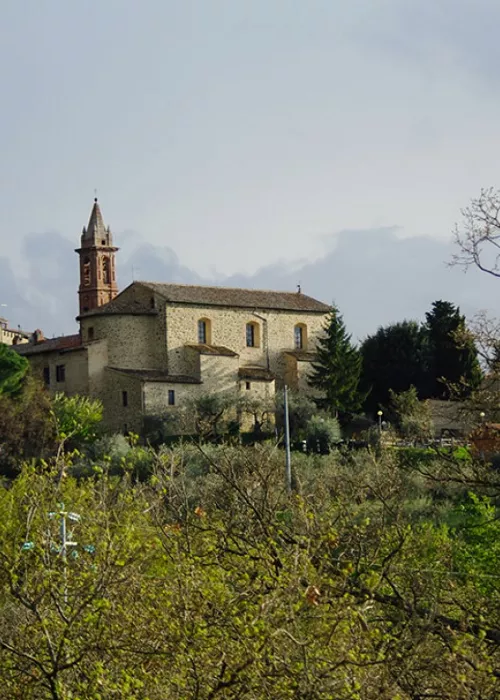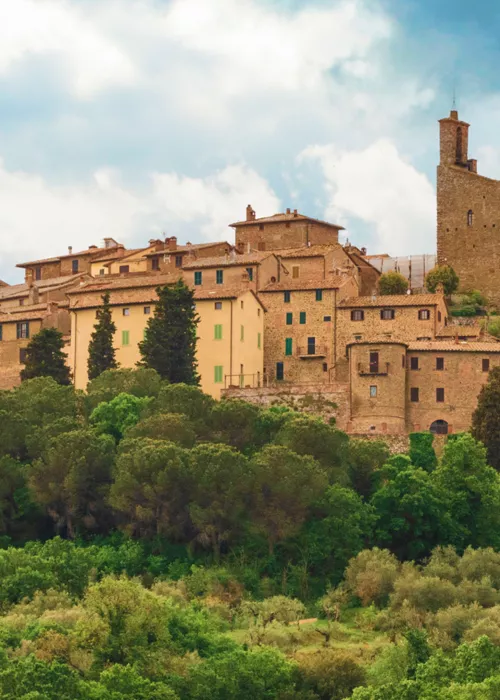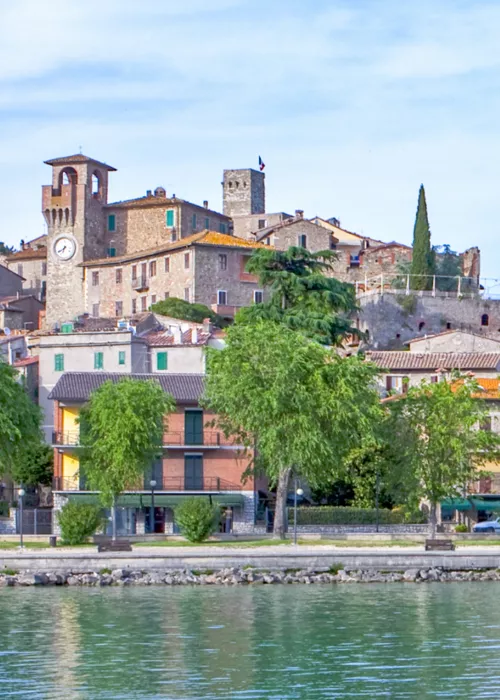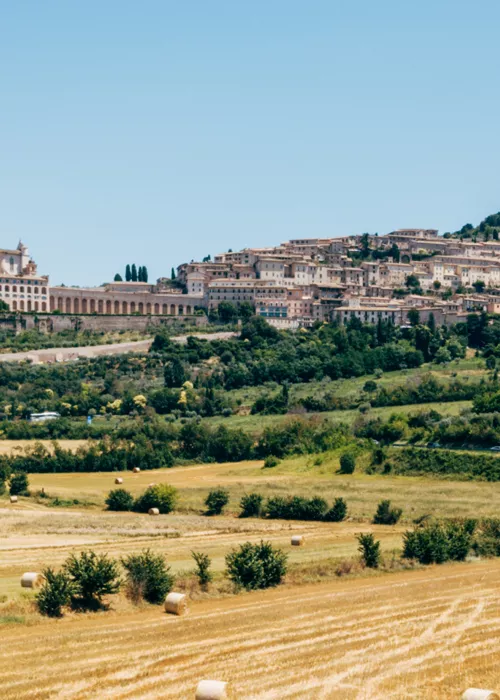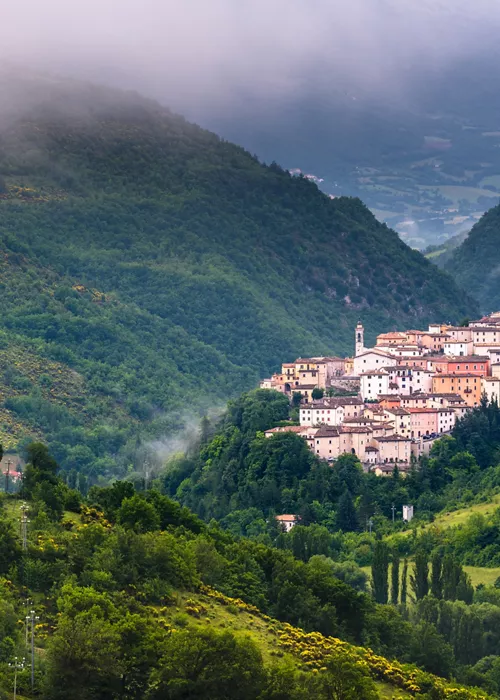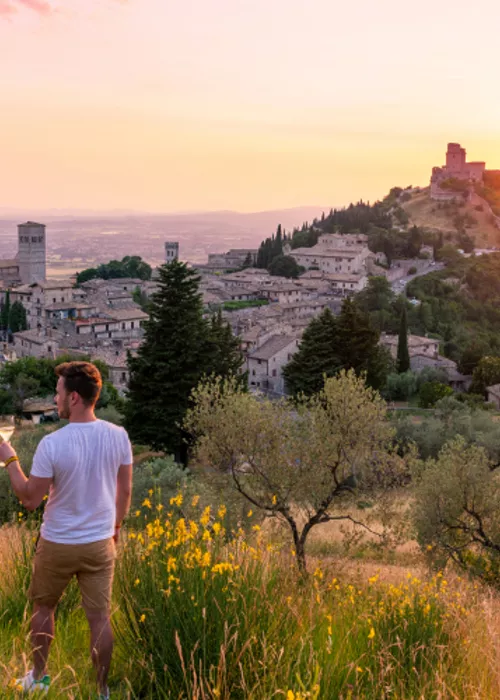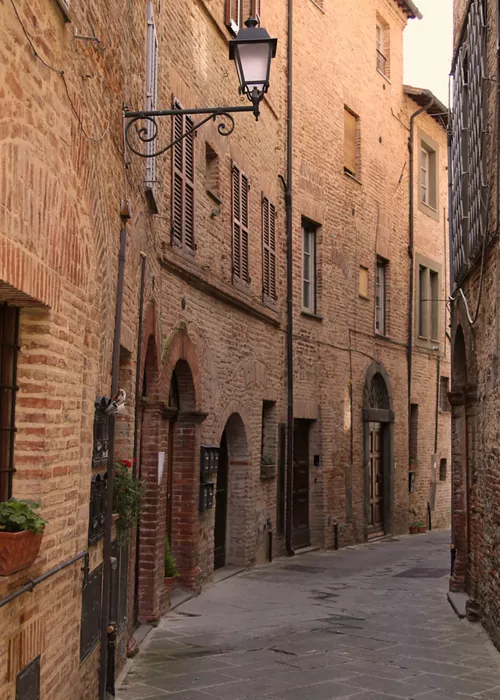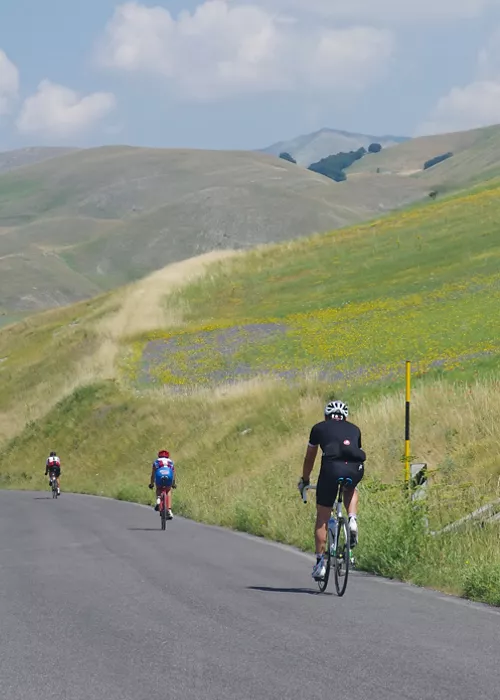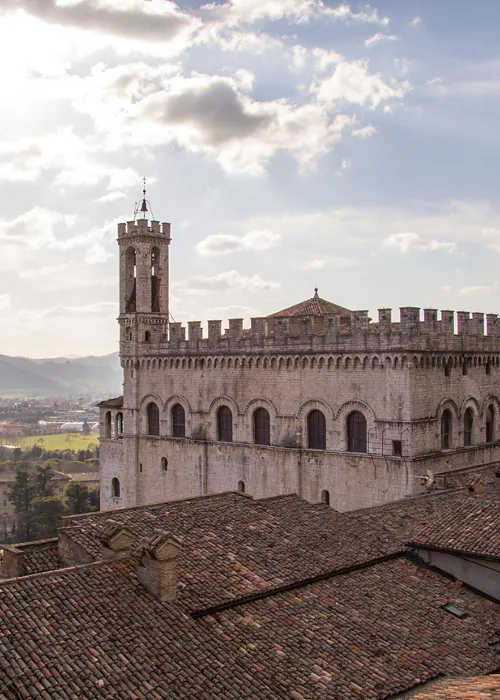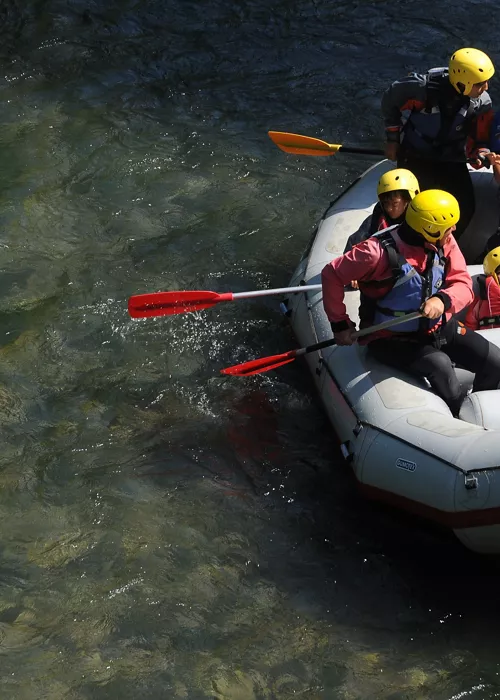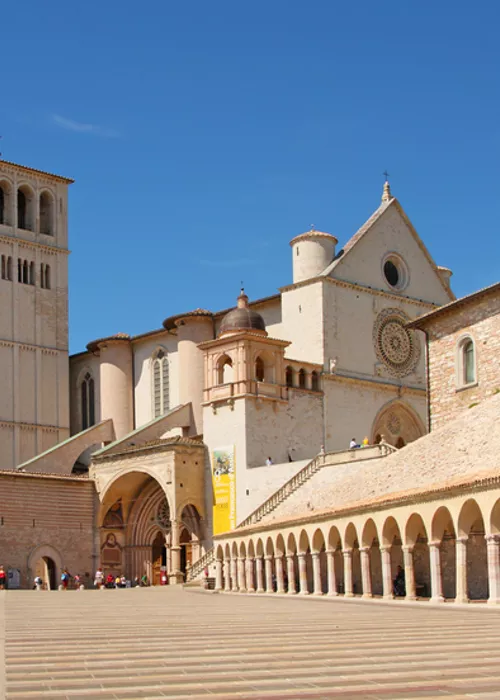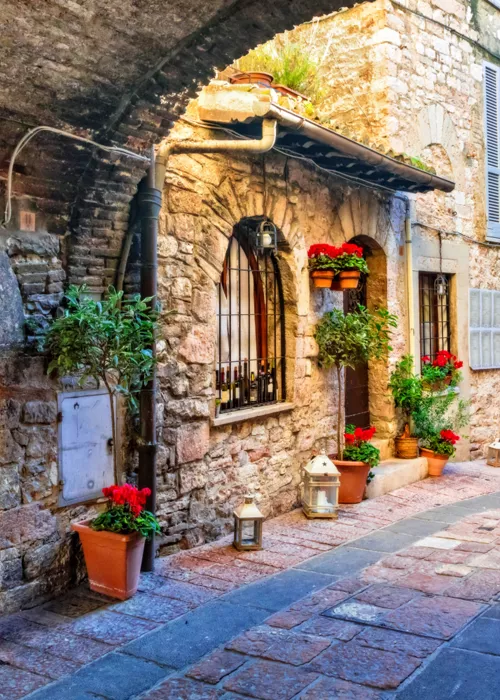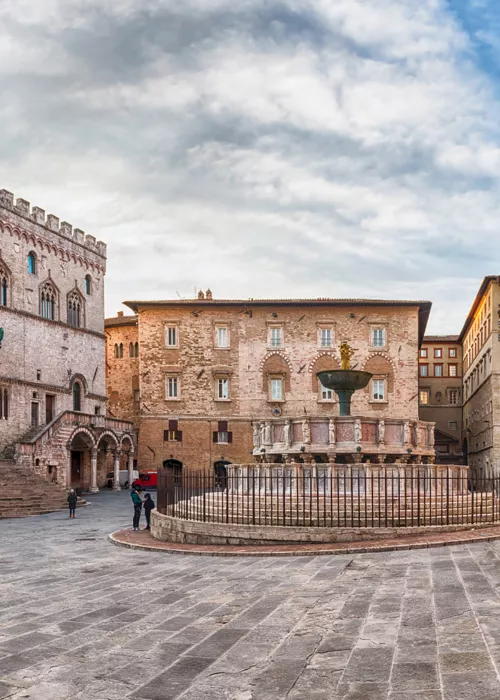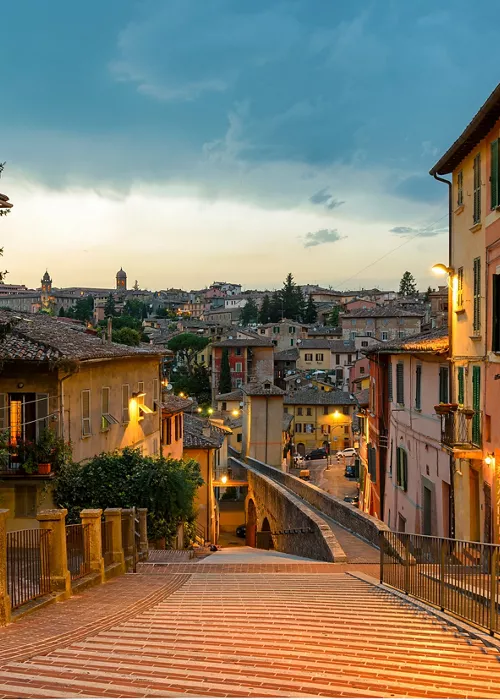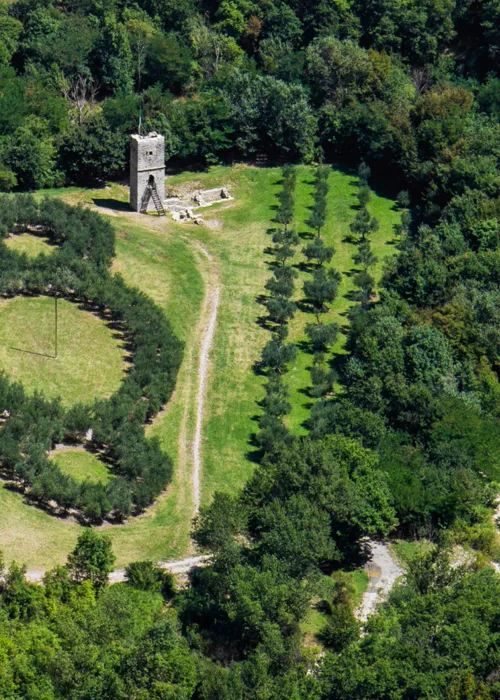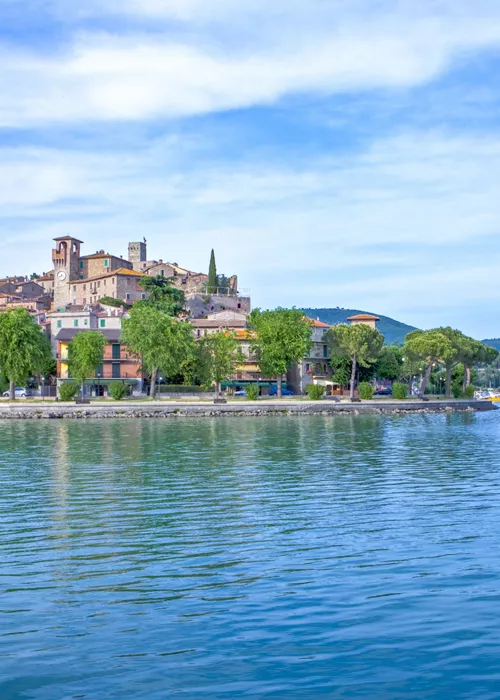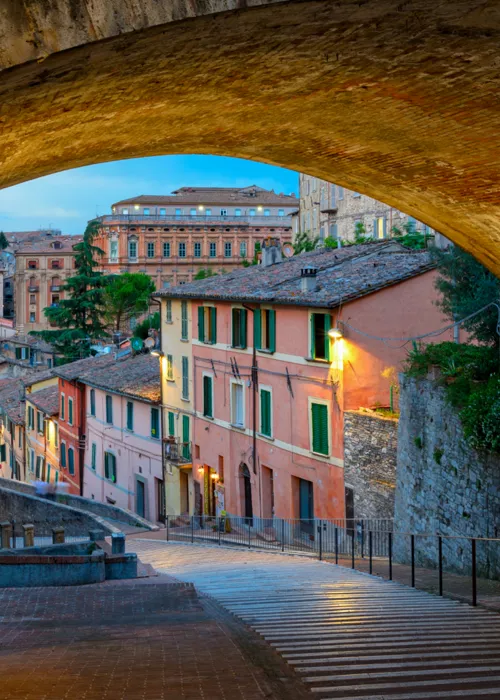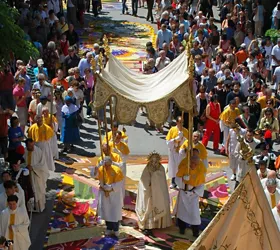Landscapes of Umbria
4 minutes

These boundless plateaus of the Umbro-Marchigiano Apennines of karst-alluvial origin are located at about 1,350 m a.s.l. and partly surrounded by the ridges of the Sibillini Mountains, which guard their unique features: a natural and man-made panorama that is hard to experience elsewhere.
What makes them famous is the incredible flowering that takes place in late spring, between the end of May and July, and that colours the whole area with poppies, cornflowers, daisies and lentils in a rainbow. One of the territory's most appreciated gastronomic delicacies, the Castelluccio di Norcia PGI lentil is grown only in these fields, where the harsh climatic conditions in which it grows mean that no treatment is required for preservation. Here, nature and the gentle presence of man coexist in harmony, making this place and the entire Monti Sibillini National Park the perfect refuge for mountain enthusiasts, where they can practice numerous outdoor activities, from hang-gliding to paragliding, from trekking to biking, up to the most romantic and evocative horse riding.
Fonti del Clitunno, a perfect combination of art and nature
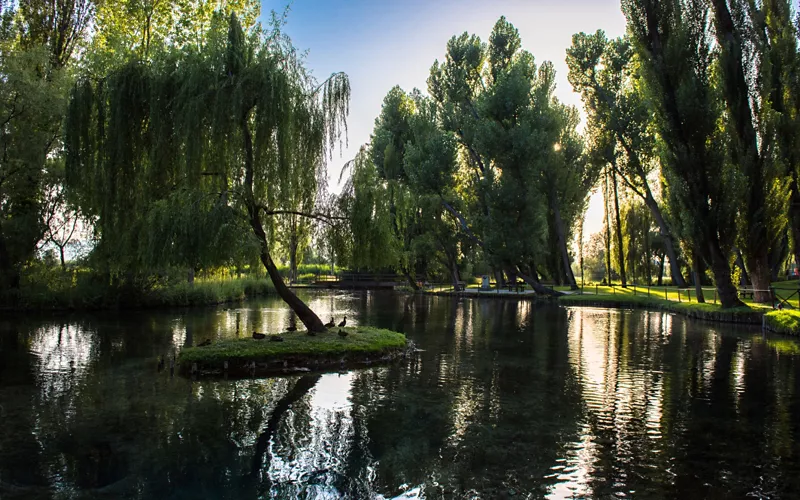
Fed by underground springs, this garden of water, with its intense and iridescent colours, is a place with a strong and fluid character at the same time, with dense vegetation, luxuriant and of rare beauty. Weeping willows and poplars surround the banks of this singular place, a symbol of a literary, secluded and captivating Umbria, a source of inspiration for poets such as Propertius, Pliny, Virgil, Byron and Carducci. Not far from here, at the foot of the town of Campello sul Clitunno, the eponymous Tempietto contributes to creating an enchanted and timeless atmosphere. An elegant early Christian building in the form of an "in antis" dedicated to San Salvatore, situated on a rise from which it dominates the marvellous watercourse, it is one of the most interesting early medieval monuments in Umbria and a precious testimony of the Lombards' predilection for prestigious architecture. Together with other jewels of Longobard art and architecture in Italy, it has recently been included in the prestigious UNESCO World Heritage List.
The magic of Lake Trasimeno and its romantic villages
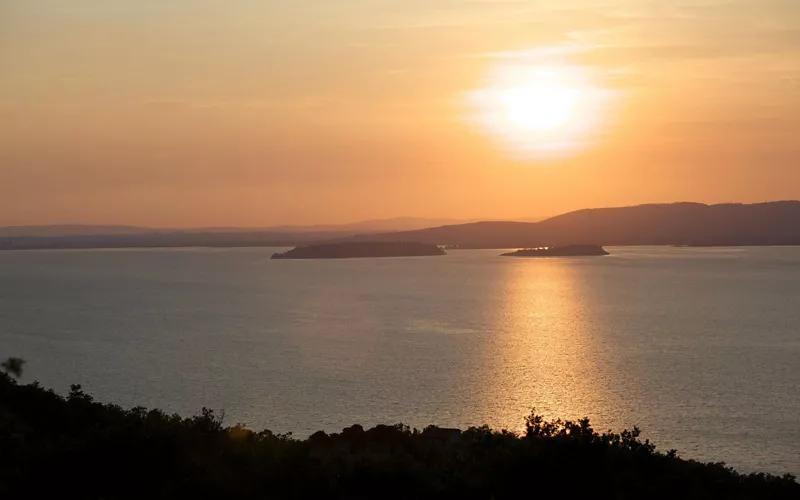
Lakeside beaches, enchanting historic villages, such as Castiglione del Lago, Paciano, Panicale, Piegaro, Città della Pieve, Magione, Passignano sul Trasimeno, Tuoro sul Trasimeno, castles and fortresses overlooking the shores and the La Valle Natural Oasis stretching along the south-eastern shore of the basin, make Lake Trasimeno one of Italy's most important water mirrors. Romantic ferries lead to the discovery of Isola Maggiore, the second largest island, covered by a thick vegetation of olive trees, holm oaks and cypresses and still today urbanised, and Isola Polvese, the largest in extension, with its Rocca erected in the 15th century, today an oasis of wildlife protection. But in these 124 square kilometres where you can practise water sports such as kitesurfing, canoeing and sailing, there is another small island: Isola Minore, shaped like a comma, inhabited until the 15th century and now privately owned. Sport, history and culture come together to create dreamy and regenerating atmospheres in a generous nature to be discovered by bike or on horseback, and where the products of the land and good lake fish give life to dishes with a unique flavour.
Marmore Falls, where water puts on a show
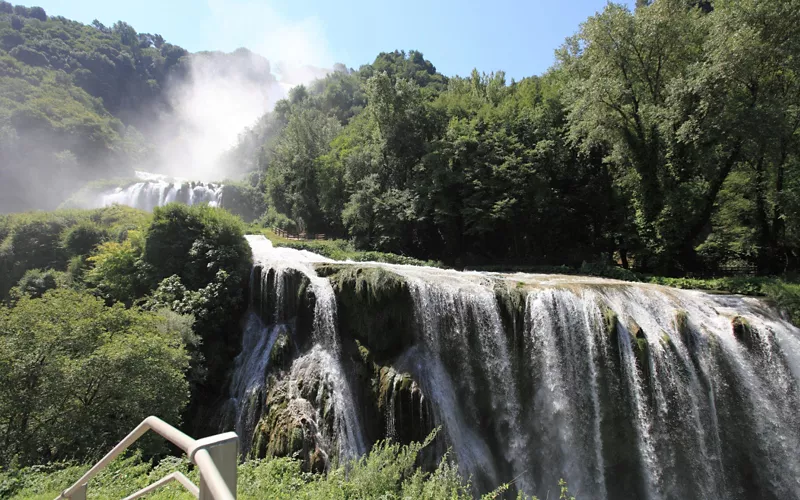
Celebrated by artists and writers of all ages, described by Lord Byron as 'horribly beautiful', the Marmore Falls, among the highest in Europe at 165 metres, represents one of the most spectacular water landscapes in the Cuore Verde (Green Heart) of Italy. This formidable work of hydraulic engineering, located in the Valnerina, inside the Nera River Regional Park, was built in Roman times to stem the waters of the Velino River, which were responsible for frequent and devastating falls.
To get to the heart of the waterfall and admire its mighty leaps, you can choose from six nature trails of varying degrees of difficulty, well marked and signposted, that wind through the park. You will be greeted by lush, luxuriant vegetation inhabited by a rich birdlife. If your adrenalinic spirit demands amazement and wonder, the Marmore Waterfalls are the ideal setting for even extreme sports: from rafting to canyoning, from kayaking to hydrospeeding. If, on the other hand, you are attracted by the subterranean depths, suggestive caves and karstic cavities of great speleological interest dug out over the millennia by the waters await you.
On the paths of St Francis, between spirituality and landscape
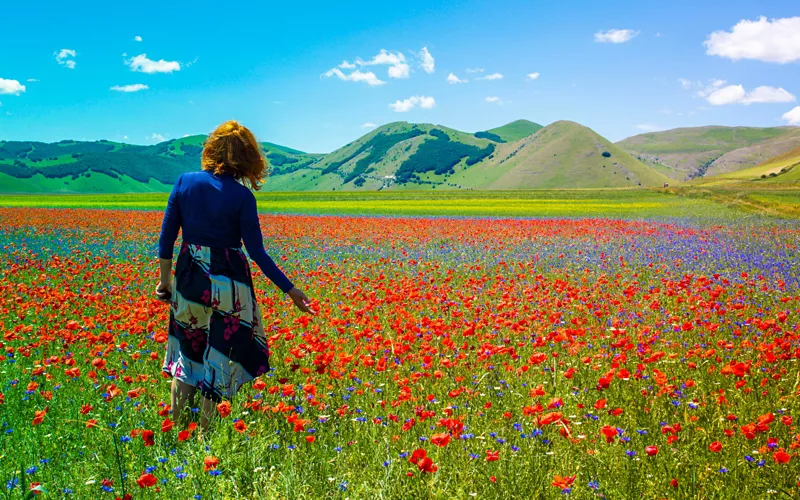
Reaching Assisi following in the footsteps of the Patron Saint of Italy along highly evocative paths: nowhere else in Italy has Christian spirituality had such incisive expressions as to modify the landscape and its perception as in Umbria. The presence of monuments and historical and artistic references linked to the figure of Francis and other saints make the feeling of mysticism that pervades this land strong. Through ancient sheep-tracks, paths that climb the mountains towards the hermitages or in the ancient and friendly atmosphere of the villages and the seraphic city, you will perceive how deeply the Franciscan lesson has penetrated here, bringing composure and at the same time joy, happiness, rigour and respect for nature and man.

